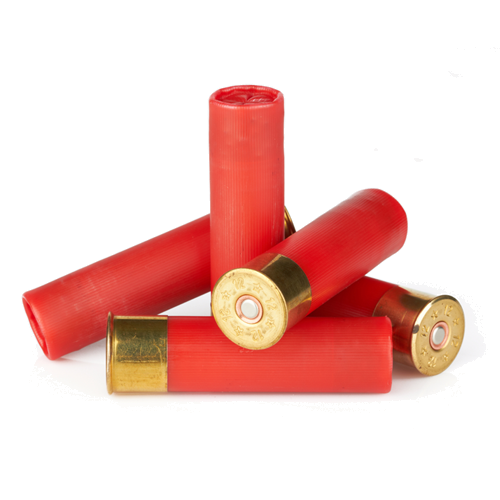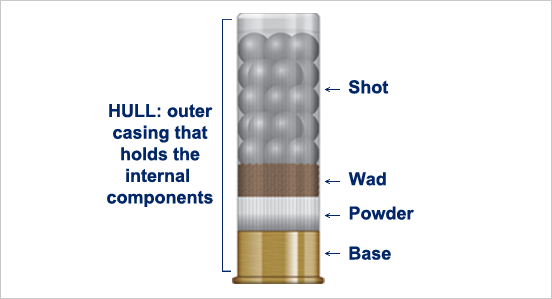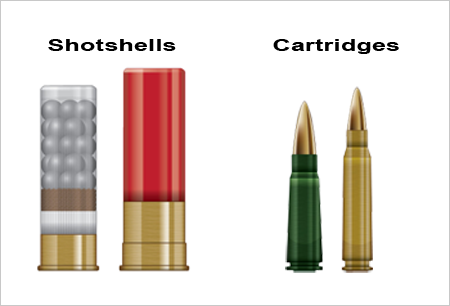Many first time gun buyers express confusion over the number of ammunition types. Here we will introduce you to the anatomy of a shotshell and when the various types of shotshells are used.
Shotshells are Used in a Shotgun
Shotguns are long-barreled firearms designed to fire "shot" (small pellet-like projectiles) or "slugs" (single solid projectiles).
There are three main types of shotshells:
- bird shot
- buck shot
- slugs
Bird shot and buck shot are made up of metallic pellets (bird shot is smaller in diameter than buck shot).
A slug is usually made of solid lead or copper. It is a single, solid metal projectile.
Shot and slugs are called the "loads" within a shotshell.

A Shotgun is a Versatile Firearm
A shotgun is considered to be a versatile firearm because one gun can shoot projectiles of varying sizes.
For example, a single shotgun (usually in 410-16-28-20-12 gage) can shoot birdshot, buckshot, or slugs.
Rifles, by comparison, shoot a specific caliber of ammunition.
The Anatomy of a Shotshell
A shotshell consists of a cylindrical casing which is typically made of paper or plastic. This casing tube sits on top of a brass base which holds the gun powder.
Inside of the casing, above the powder, there is usually a wad of paper or plastic material which holds the load or the shot in the upper end of the case.

Differences Between Rifle/Handgun Ammo and Shotshells
Shotgun ammunition is called a shotshell. Shotgun ammo is typically broken down into three categories: birdshot, buckshot, and slugs.
A shotshell consists of a cylindrical casing filled with metallic pellets. The casing is typically made of paper or plastic. This tube sits on top of a brass base which holds the gun powder. Inside of the casing, above the powder, there is usually a wad of paper or plastic material which holds the shot in the upper end of the case.
Rifle and handgun ammunition is called a cartridge (or round). A cartridge includes a metal casing, powder, primer and bullet.



